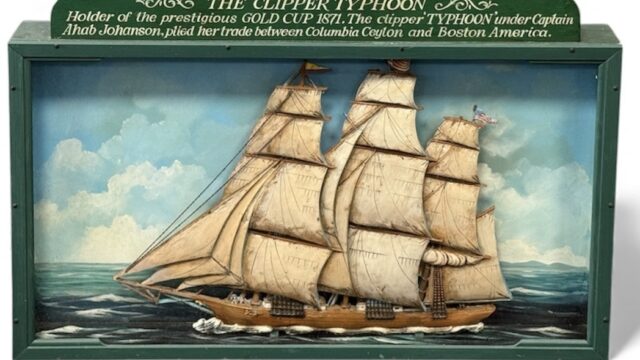Welsh Connections to the Northern Powerhouse
When those of us living in Yr Hen Wlad think about our relationship with the country next door, it is most certainly the north West region of England to whom we have the closest association. Ben Rogers Jones discusses that association with reference to pictures in our upcoming Selections auction on April 30th.
The Welsh (and particularly us Gogs) are fully aware of the histories and cultures of Liverpool, Manchester, Chester and their environs. We are aware too, that the Welsh have played major roles in the development and history of these cities. Liverpudlians will often proclaim proudly of their Irish immigrant heritage but for some reason rarely talk up their Welsh heritage. Yet according to the most recent survey, Jones is the most common surname in the city while Williams is third, Davies, is fourth, Hughes is fifth and Roberts is sixth! Poor old Murphy was but tenth.
In fact, Liverpool was built by the Welsh, and I am not referring to Toshack or Rush (although that is partly true but with a very important Scot called Shankly thrown in). In the early part of the 19th Century, 1 in 10 Liverpool dwellers were from north Wales. Then in the mid part of the century, Welsh architect Richard Owens from Pwllheli, together with David Roberts Co started building Liverpool streets - with a Welsh workforce and Welsh materials. They erected Wynnstay Street, Rhiwlas Street, Powis Street, Madryn Street, Kinmel Street, Pengwern Street and Treborth Street. They were followed by numerous other brigades of Welsh builders such as Owens & Roberts and J W Jones & Sons. By the 1850s and 1860s, Welsh involvement in the Liverpool construction sector was well established. There were more than 20,000 Welsh builders working in the city by 1850. Not all these Welsh builders named their streets after Welsh places and Welsh people and so there is a very good chance that anyone living in a traditional Liverpool terrace, near the city-centre, is occupying a house designed and built by Welsh hands and with Welsh materials.

As well as Welsh labour, bricks, and mortar, we also brought Welsh culture to Liverpool in the form of the National Eisteddfod in 1884, 1900 and 1929. The poet Saunders Lewis – a fiercely proud Welshman and prominent Welsh Nationalist and co-founder of Plaid Cymru, was born in Wallasey, in 1893. Continuing in a political vein, Yr Amserau, the Victorian bi-weekly Welsh language newspaper that supported radical and nonconformist ideas, was also founded, and edited, in Liverpool.
Of course, it is natural to have such close ties with Liverpool. After all, on a clear day, the Clwydian range can be seen from the city. Liverpool famously benefits from the natural resources of Wales, not just in the easy access to our stunning mountain ranges, but through Liverpool kitchen taps too. Remember Tryweryn. So, it follows that it is no surprise to hear north Wales slants in the football stadium crowds (I used to regularly sit in the same seat at Anfield and the chap behind me was from Llandudno Junction)! Neither is it unusual to hear Welsh accents within the aisles of the department stores and at the bars of Liverpool pubs. While just over the Mersey, in Port Sunlight, Welsh people make the pilgrimage to see the most famous Welsh art icon of all, ‘Salem’ by Sydney Curnow Vosper.

The Welsh builders didn’t travel in the same numbers down the East Lancs Road to Manchester, but the links are still strong. The 19th Century saw an influx of migrants from Wales to Manchester to seek employment after the decline of industries in Wales such as copper mining in Anglesey. The most famous Welsh person of all, David Lloyd George, was born in Manchester. The important socialist of the 19th Century R J Derfel lived in Manchester as did Ceiriog, Wales’ most loved sentimental poet and lyricist. I apologise now for returning to the beautiful game, but my footy interest is a testimony to the influence that the north West of England had on my childhood, and my parent’s daily delivery of the Liverpool printed North Wales Daily Post. The back-pages of which were divided between Everton and Liverpool (pre- Hollywood Wrexham FC’s coverage was lost somewhere amongst the classifieds). Billy Meredith was one of the first football superstars before the First World War. Meredith plied his trade as winger for both Manchester clubs - Utd and City. The Welshman, from Chirk, had a lasting impact on The Professional Football Association when he contributed to the creation of Professional Footballers’ Association. Seemingly moving from football to our artistic destination, Billy Meredith was a special fascination to the artist L S Lowry who was enthralled with the culture around football matches. So, when we consider these inextricable links between Wales and the north West of England, it should be no surprise that we regularly auction pictures by Manchester and Liverpool artists and that these pictures turn up in homes across Wales.
We are delighted to offer our second L S Lowry oil for auction in the last few years. Also in the same Selections auction are two L S Lowry lithographs, an oil painting by Helen Bradley and an oil painting by Theodore Major. Whilst in recent months we have been selling a collection of works by Harold Riley. These artists are considered part of the Northern Powerhouse of artists, and each were consigned from Welsh clients or families with Welsh connections.

Sold £5200
L S Lowry was a frequent visitor to Wales and the nation provided the artist with subject matter in at least two points in his career. In the 1920s, he spent time on the north Wales coast and in the late 1950s / early 1960s his Rhondda-born patron Monty Bloom encouraged him to paint the industrial south Wales valleys. A little-known fact about a well-known Lowry painting is that the 1959 ‘Woman With a Beard’ is based on a passenger who joined the artist’s train at Newport, when he was travelling from Cardiff to Paddington (what is more surprising is that I think I saw the same unshaven passenger some 65 years later disembarking in Cwmbran)!
Lowry’s more famous Welsh scenes include ‘Hillside in Wales’, 1962, ‘A Winding Road’ which was a scene near Denbigh and painted in 1961, ‘Ebbw Vale’ painted in 1960, and perhaps the best-known of all Welsh scenes to a Welsh art lover, ‘Six Bells Colliery, Abertillery’ which was painted in 1962. The latter hangs at the National Museum of Wales in Cardiff. There is an obvious appeal of Lowry’s work to a Welsh audience. The oil painting which we are offering this time, ‘ Man Looking at Something’ painted in 1961, is a typical Chaplin-esque caricature which is observed with a sense of detachment. The figure wears a Lowry-type uniform of long coat, bowler hat and big boots. The late twentieth century Welsh art collector is familiar with such lonely caricatures in trademark clothing and accessories. But more usual to us are the flat-caps and walking sticks which are synonymous with Welsh artists. Certainly ‘Man Looking at Something’ would not look out of place on the walls amongst a collection of farmers by Aneurin Jones, Mike Jones, Will Roberts or ‘Kyffins’. And the comparisons with Jack Jones and Lowry are well documented. We have two fabulous Jack Jones examples in this Spring’s Welsh Sale in which the Lowry’s influence is clearly demonstrated, despite Jack’s denial of the moniker of the Welsh Lowry, preferring to declare himself Leonardo of the Slag Heap.
Selections: Lot 577
LAURENCE STEPHEN LOWRY RA (1887 - 1976) oil on board - three figures in an archway with centre figure in large boots, overcoat and cap, all to an ivory and ochre background, entitled verso 'Man Looking at Something', dated 1961, 21 x 18.8cms
£50,000-70,000

Helen Layfield Bradley (1900-1979) is another artist from the north West region who has captured the imagination of collectors across the UK and in America. Although Helen Bradley had been interested in art all her life, one of the pivotal moments for the artist was when she was in her 60s and met L S Lowry. Lowry encouraged her narrative style and to base her work on her own childhood memories growing up in Lees, near Oldham. It is these pictorials that recall her Edwardian childhood for which she is famous. They were first exhibited at The Saddleworth Art Society in 1965, followed by a London exhibition in 1966, followed by sell outs at the Carter Gallery in Los Angeles in 1968. The narrative within Bradley’s paintings is infused with nostalgic innocence and rose-tinted incidence. In contrast to some of the other narrative artists in this catalogue, such as L S Lowry, Kevin Sinnott, Sally Moore and Jack Jones, Bradley informs us of the story of the composition, it is not up to our interpretation. In the example on offer in this Spring’s Selections auction, Bradley’s written recollection is of 1906, when ‘Helen and Aunt Mary’ returned from a dog walk… without the necessary dogs. It might not leave a lot to our imagination, but it is innocent fun and will appeal to the Welsh collector’s hiraeth for the old days.
Selections: Lot 574
HELEN BRADLEY MBE (1900-1979) oil on board - 'Oh where, Oh where can Gyp and Barney be!', lady with a lantern and children at play, inscribed on card verso detailing the 1906 occasion when Helen and Aunt Mary returned from a walk without the pet dogs, signed and dated 1972, 28.5 x 24cms
£15000-20000

Theodore Major (1908-1999) of Wigan, was a good friend of L S Lowry and they shared several commonalities; both artists were as Lancashire as they come, they were both members of the Manchester Group, and they both shared a fascination with the plight of the post-industrial landscape and society. The comparisons between Lowry and Major are not new. There is dark humour to much of Lowry’s work but in Theodore Major’s landscape paintings there is simply dark without the humour. Many of Major’s paintings are unapologetically bleak, brutal even. Typically, there is driving rain and smoggy skies broken only by glimpses of light from a hazy streetlight, cloudy moon, or smoky industrial lamps. There is nothing Bradleylike about Major’s gritty compositions. In his own words, Theo Major was out to capture “the longings, the sufferings, the ideals and fears” of ordinary northern folk. Major was not afraid to take on major themes, such as the threat of atomic wars, poverty, and pollution. The Theodore Major painting in this Spring’s Selections auction shows a night scene of figures sheltering under a tree from torrential rain, near an isolated farm. The landscape is likely to be Lancashire, as Theodore Major rarely ventured far. But the scene could quite easily be a north Wales upland farm. There is no ‘fun’ to be had in this painting, it is bleak, it is brutal, and unforgiving. But to me there is beauty in just those factors.
Selections: Lot 573
THEODORE MAJOR (1908-1999), oil on board - Storm at Farm, landscape with farm buildings and figures sheltering from the rain under a tree, 30 x 36cm;
£4500-5500

We are delighted to bring each of these northern paintings and prints to the market. It will be interesting to see whether Wales’ close connection to the north West of England will result.




